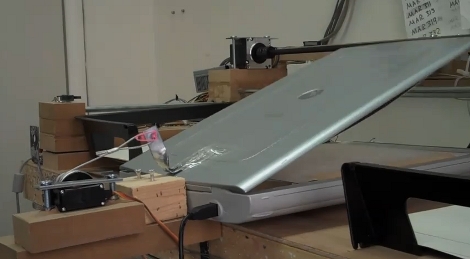
The Gado project is part of the Johns Hopkins University Center for African Studies. It has been tasked with archiving documents having to do with the East Baltimore Oral Histories Project. In short, they’ve got a pile of old pictures and documents that they want digitized but are not easily run through a page-fed scanner because they are fragile and not standard sizes. The rig seen above is an automated scanner which picks up a document from the black bin on the left, places it on the flat-bed scanner seen in the middle, and moves it to the black bin on the right once it has been scanned. It’s not fast, but it’s a cheap build (great if you’ve got a tight budgt) and it seems to work.
The machine is basically a three-axis CNC assembly. Above you can see one motor which lifts the lid of the scanner. You can’t see the document gripper in this image, but check the video after the break which shows the machine in action. A vacuum powered suction cup moves on a gantry (y-axis) but is also able to adjust its height (z-axis) and distance perpendicular to the gantry (x-axis) in order to grab one page at a time.
The pictures on the build log have captions to give you an idea of how this was built. We didn’t see any info about post-processing but let’s hope they have an auto-crop and auto-deskew filter in place to really make this automatic.
Continue reading “Automated Scanning For A Pile Of Documents”
















